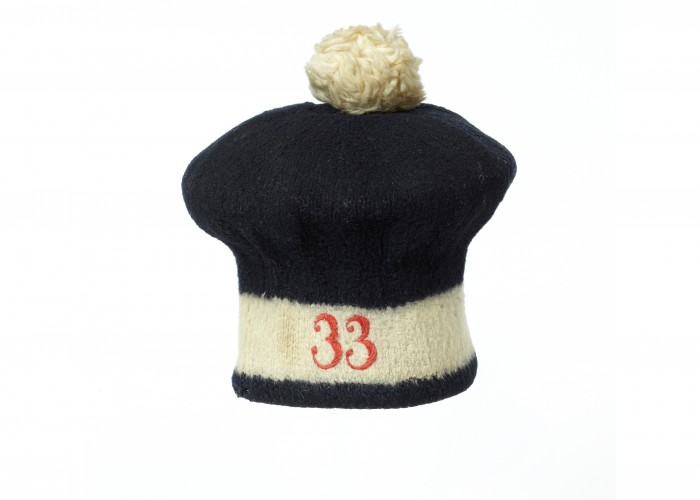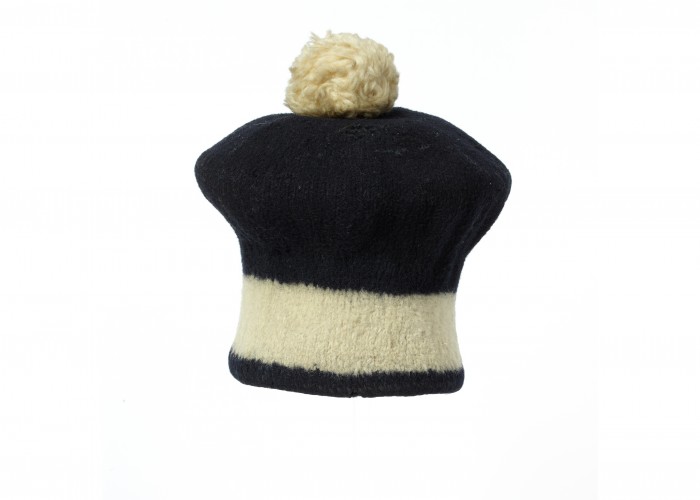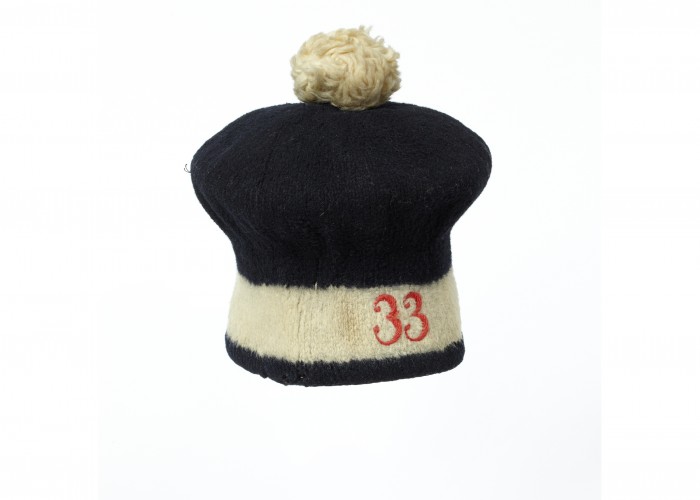Forage Cap

 Forage Cap of the 33rd Regiment of Foot. Copyright Duke of Wellington's Regimental Museum.
Forage Cap of the 33rd Regiment of Foot. Copyright Duke of Wellington's Regimental Museum.
 Forage Cap of the 33rd Regiment of Foot. Copyright Duke of Wellington's Regimental Museum.
Forage Cap of the 33rd Regiment of Foot. Copyright Duke of Wellington's Regimental Museum.
 Forage Cap of the 33rd Regiment of Foot. Copyright Duke of Wellington's Regimental Museum.
Forage Cap of the 33rd Regiment of Foot. Copyright Duke of Wellington's Regimental Museum.
This is a forage cap from the British 33rd Regiment of Foot, who fought at the Battle of Waterloo. A forage cap was an item of working uniform, for soldiers to wear when they were not in battle. It was intended to be practical and comfortable, ideal for wearing when foraging for food or fuel.
During the Napoleonic Wars, British infantry soldiers had to wear a stiff cap called a shako when in combat, on parade, or marching. These items were quite heavy and uncomfortable, . Originally, forage caps were invented specifically for the cavalry, who had to spend considerable time gathering food for their horses – known as forage. The term became applied to all “undress” uniform caps.
Soldiers would wear their forage caps when guarding the camp at night, or on “fatigues” – labour that didn’t involve military duties, such as cleaning or cooking. This kept their dress caps clean and undamaged, which was cheaper for the army – and for the soldier, who had to buy replacement uniform items out of his own wages. This knitted woolen cap, introduced in 1812, would cost 2 to 3 shillings. Private soldiers at the time were paid one shilling a day.
The 33rd (West Riding) Regiment of Foot had its origins in Yorkshire, in northern England. They were closely associated with the Duke of Wellington, who was an officer of the regiment – he bought a Major’s rank in the 33rd in 1793, when they were commanded by his brother, Colonel Arthur Wellesley. The 33rd fought against the Tipu Sultan, ruler of the Indian kingdom of Mysore. The 33rd returned from fighting in India in time to come under the command of the Duke of Wellington during the Waterloo campaign, fighting in the battles of Quatre Bras and Waterloo. In 1853, the year after the Duke of Wellington’s death, the 33rd were renamed the Duke of Wellington’s Regiment, to honour their long association with the famous commander.
-
Curatorial info
- Originating Museum: Duke of Wellington's Regimental Museum
- Production Date: 1812
- Material: Wool
-
Use this image
You can download and use the high resolution image for use in a non-profit environment such as a school or college, but please take note of the license type and rights holder information below
- Rights Holder: Copyright Duke of Wellington's Regimental Museum.
- License Type: Creative Commons
Find it here
This object is in the collection of The Duke of Wellington’s Regimental Museum









